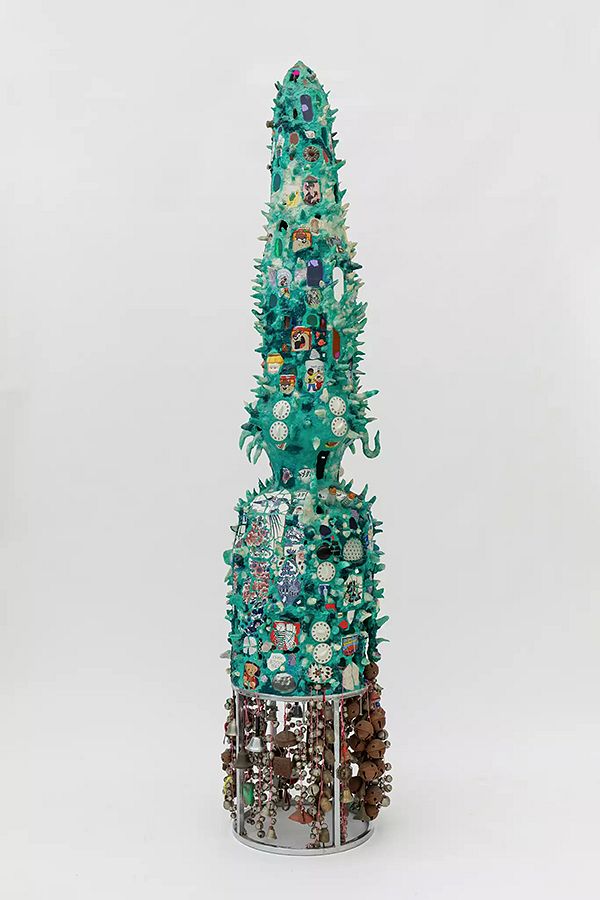Timothy Washington, Influenced by the Kapok Tree, 2009.
Storm Ascher and Superposition Gallery present A Love Letter to LA through 3 February at Phillips Los Angeles.
The show features artists with West Coast ties spanning several generations. The curator and artists have selected key excerpts from poems and literature by California writers such as Al Young, Wanda Coleman, Nipsey Hussle, Joan Didion, and Lynell George — which together serve as their love letter to the City of Angels.
Below, browse selected works from the exhibition and read Ascher’s discussions with the artists — ranging from the California landscape to Beyoncé and more.
Alex Anderson

Alex Anderson, The S, 2022. A Love Letter to LA, Phillips Los Angeles.
Read nine questions for Alex Anderson >
Jessica Taylor Bellamy
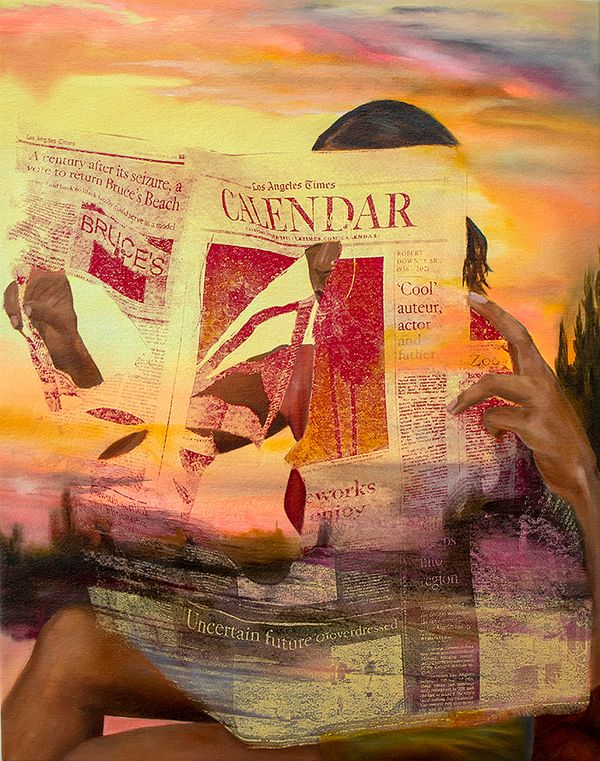
Jessica Taylor Bellamy, After the Conquest, 2023. A Love Letter to LA, Phillips Los Angeles.
Read nine questions for Jessica Taylor Bellamy >
Knowledge Bennett
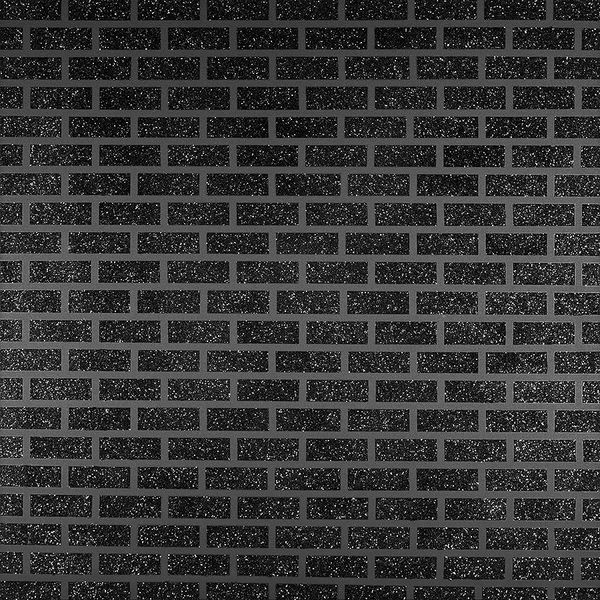
Knowledge Bennett, Bldg. C Apt. 10, 2023. A Love Letter to LA, Phillips Los Angeles.
Read nine questions for Knowledge Bennett >
April Bey

April Bey, I Had Assumed You Were Coming for Blood, THAT MAKES TWO OF US, THAT MAKES TWO OF US!, 2021. A Love Letter to LA, Phillips Los Angeles.
Read nine questions for April Bey >
Mustafa Ali Clayton

Mustafa Ali Clayton, Ziondrea, 2022. A Love Letter to LA, Phillips Los Angeles.
Read nine questions for Mustafa Ali Clayton >
Kim Dacres
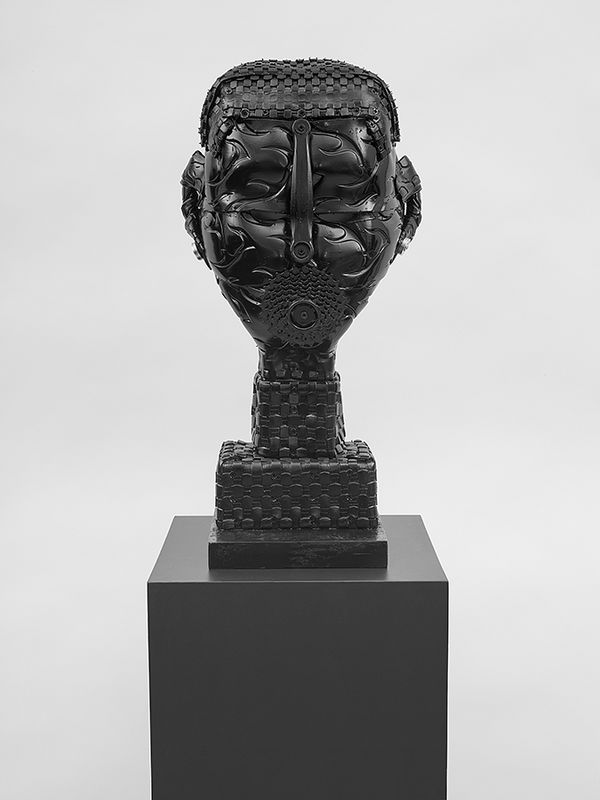
Kim Dacres, Mikayla II, 2022. A Love Letter to LA, Phillips Los Angeles.
Read nine questions for Kim Dacres >
Emiliana Henriquez
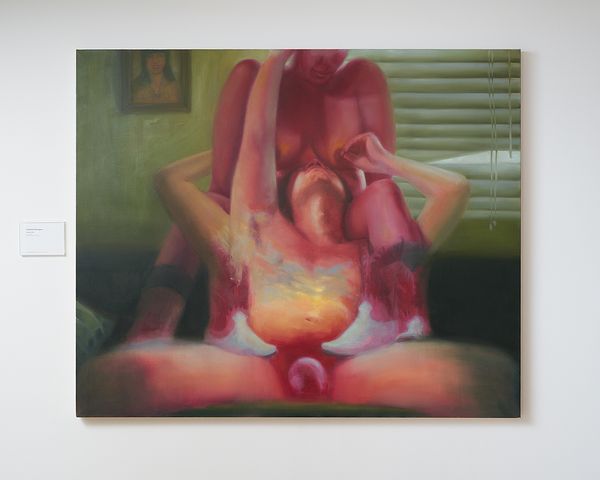
Emiliana Henriquez, Cumulus, 2022. A Love Letter to LA, Phillips Los Angeles.
Read nine questions for Emiliana Henriquez >
Audrey Lyall
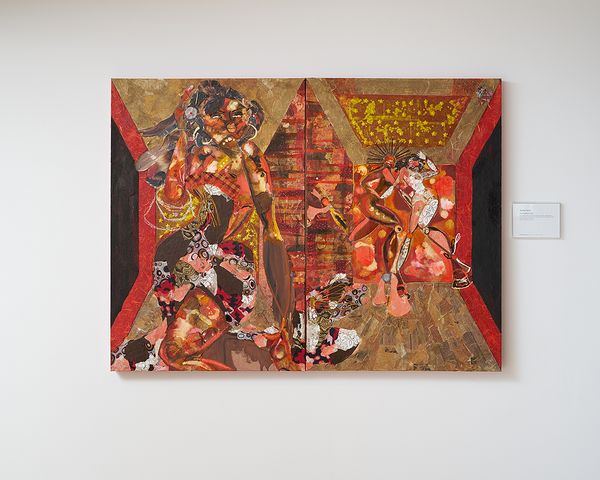
Audrey Lyall, Movin' & Groovin', 2022. A Love Letter to LA, Phillips Los Angeles.
Read nine questions for Audrey Lyall >
Muna Malik

Muna Malik, Neighborhood Portrait - Yemen, 2022. A Love Letter to LA, Phillips Los Angeles.
Read nine questions for Muna Malik >
Kenrick McFarlane

Kenrick McFarlane, Untitled (Icelandic Bride), 2023. A Love Letter to LA, Phillips Los Angeles.
Read nine questions for Kenrick McFarlane >
Ginger Q
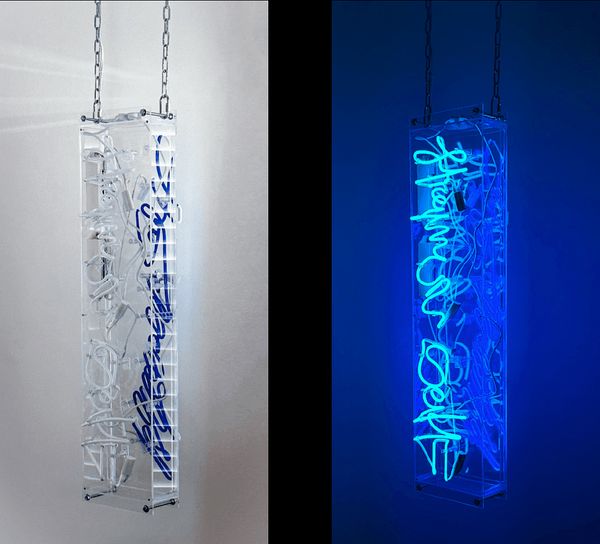
Ginger Q, Higher Self, 2023. A Love Letter to LA, Phillips Los Angeles.
Read nine questions for Ginger Q >
Jamel Robinson
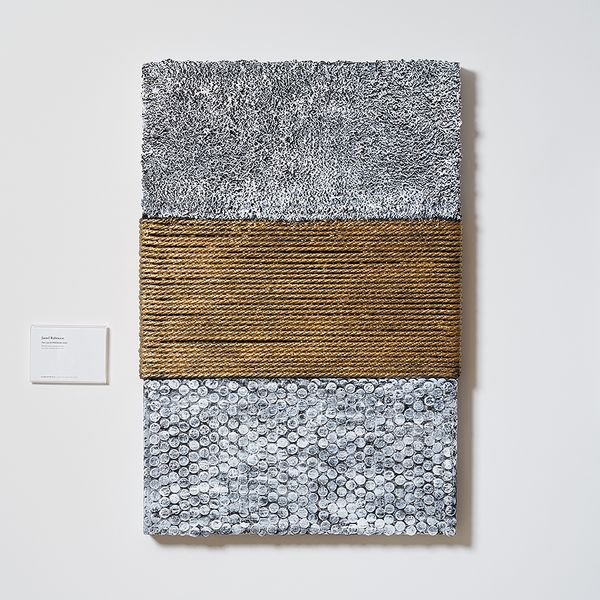
Jamel Robinson, The Cost Of FREEDOM, 2022. A Love Letter to LA, Phillips Los Angeles.
Read nine questions for Jamel Robinson >
Tariku Shiferaw
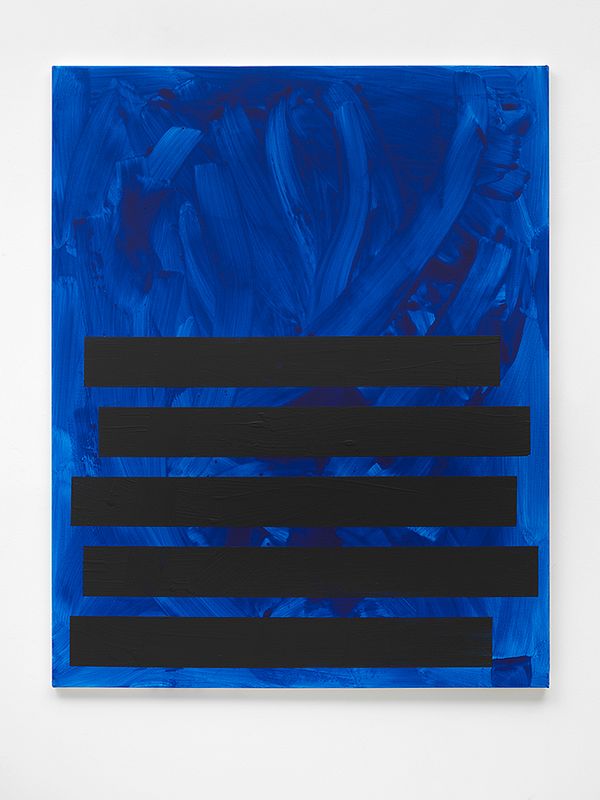
Tariku Shiferaw, N95 (Kendrick Lamar), 2022. A Love Letter to LA, Phillips Los Angeles.
Read nine questions for Tariku Shiferaw >
Alisa Sikelianos-Carter
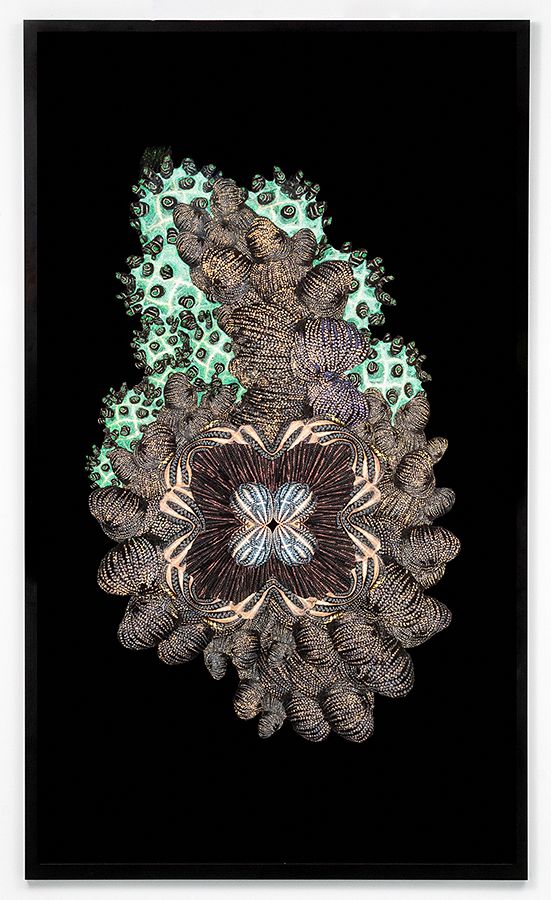
Alisa Sikelianos-Carter, Africosmos of Sun and Sea #1, 2022. A Love Letter to LA, Phillips Los Angeles.
Read nine questions for Alisa Sikelianos-Carter >
MR. WASH
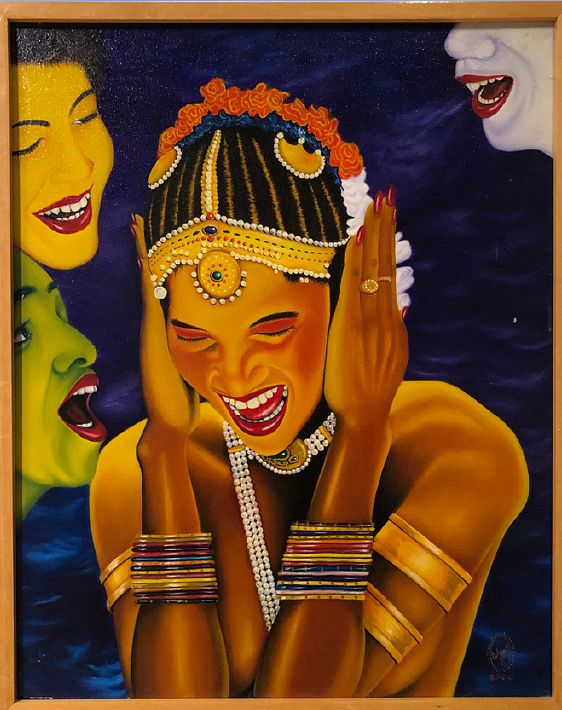
MR. WASH (Fulton Leroy Washington), Yakity Yak, 2000. A Love Letter to LA, Phillips Los Angeles.
Read nine questions for MR. WASH >
Timothy Washington
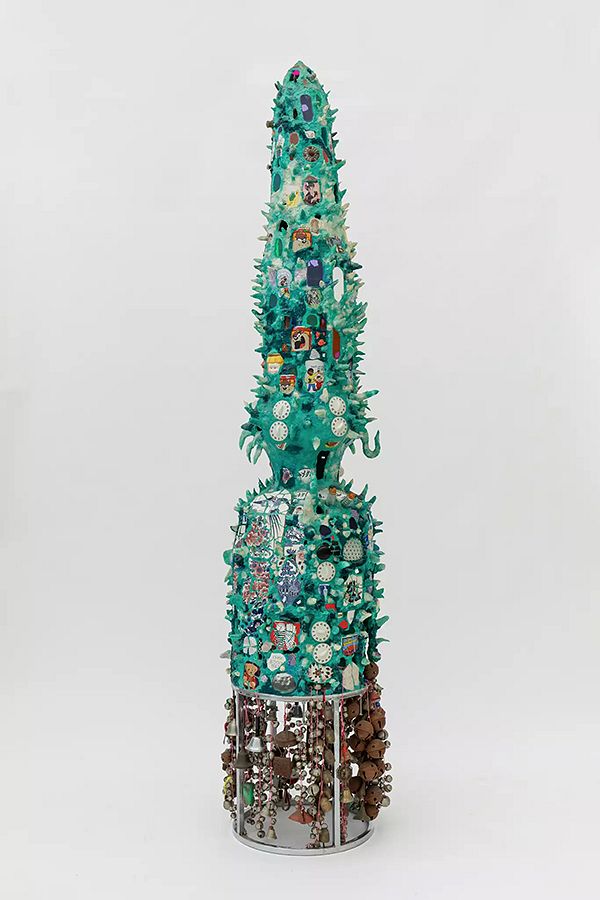
Timothy Washington, Influenced by the Kapok Tree, 2009. A Love Letter to LA, Phillips Los Angeles.
Read nine questions for Timothy Washington >
Rikkí Wright
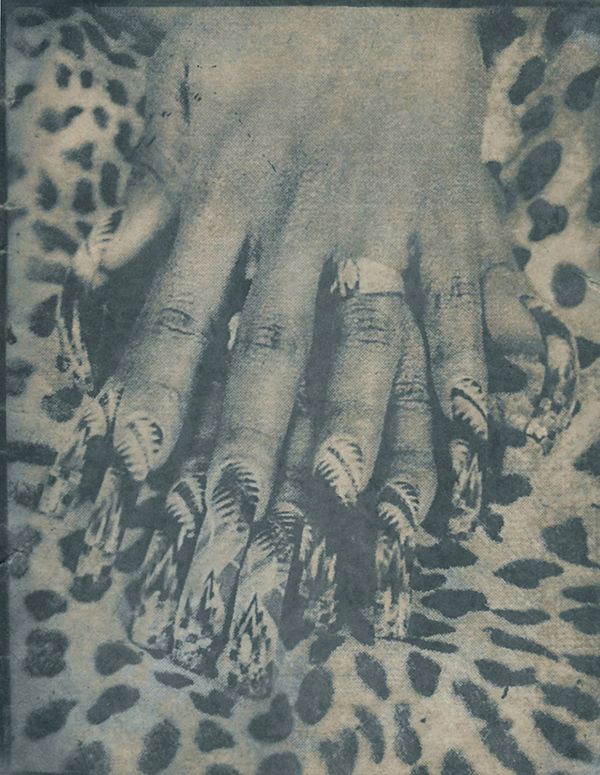
Rikkí Wright, these hands, 2022. A Love Letter to LA, Phillips Los Angeles.
Read nine questions for Rikkí Wright >
Alex Anderson
Storm Ascher: What is the first of your 5 senses that activate when you think of Los Angeles?
Alex Anderson: Sight. Light is a crucial component of the LA landscape. From light and space art to sunsets, to the physical and conceptual sheen of the city and its see-and-be-seen culture, light and sight are central and immediate in my experience of LA.
SA: Which writers have inspired your work?
AA: Dave Hickey, Freud, Jung, Oscar Wilde.
SA: What comes to mind when you think of ‘homecoming’?
AA: Relief.
SA: Which artists influence your practice?
AA: Adrian Saxe, Barbara Kruger, Magritte, Yue Min Jun, Dali, Manet, Brancusi.
SA: Who do you look to for compassion and understanding when you are stuck in the studio?
AA: I believe we all have the answers inside of us to handle the unique sets of concerns our lives present us, and as artists, it is important to look within and then bring those answers into form.
SA: What museums or institutions in LA do you dream of being a part of?
AA: The Broad, LACMA, MoCA, The Getty.
SA: What does the word “nomad” mean to you?
AA: Someone who is actively in a state of transience.
SA: When you decided to be an artist full time, what flashed before your eyes?
AA: The unfulfilling life I thought I had to live.
SA: Thinking back to your first show in LA, what made it special?
AA: It was a thrilling moment of actualization that told me the work I was making meant something to an audience beyond myself. I felt empowered.
Jessica Taylor Bellamy
Storm Ascher: What is the first of your 5 senses that activate when you think of Los Angeles?
Jessica Taylor Bellamy: Slight. The way light filters through particles in the air. The way light can seem to sit on top of the landscape heavy. Bright unfiltered light except in June.
SA: Which writers have inspired your work?
JTB: Lynell George, Carey McWilliams, Mike Davis, Octavia Butler, Ray Bradbury, Reyner Banham.
SA: What comes to mind when you think of ‘homecoming’?
JTB: Comfort. Friends. Familiarity.
SA: Which artists influence your practice?
JTB: So many — Ed Ruscha, Robert Rauschenberg, Annie Laplin, James Rosenquist, Jim Hodges, Mark Bradford, Laura Owens, Richard Prince, Wayde Guyton, Pipilotti Rist.
SA: Who do you look to for compassion and understanding when you are stuck in the studio?
JTB: My mentors, artists Edgar Arceneaux, Karen Liebowitz, Jennifer West, and friends who are artists — Storm, Danie Cansio.
SA: What museums or institutions in LA do you dream of being a part of?
JTB: Hammer Museum and LACMA hold a special place for me. Hammer helped me get on the path I’m on today and LACMA was my earliest museum experience with my mom (coupled with the Tar Pits).
SA: When you decided to be an artist full time, what flashed before your eyes?
JTB: Playing the board game Life as a kid thinking that would be the only way, and also someone long ago saying the only way to do it was to marry rich.
SA: Thinking back to your first show in LA, what made it special?
JTB: That it can directly correlate the confidence and momentum from that show to where I am now.
Knowledge Bennett
Storm Ascher: What is the first of your 5 senses that activate when you think of Los Angeles?
Knowledge Bennett: I’d have to say my sense of sight. Sunlight all but swallows this city whole. There’s an intense brightness, most often unobstructed, completely bathing it’s sprawling landscape. This makes this light unforgettable and unlike most other metropolitan cities in America.
SA: Which writers have inspired your work?
KB: For my latest body of work, one writer in particular comes to mind, Jane Jacobs and her book The Death and Life of Great American Cities. My most recent series explores the world I once knew, the world I’ve come to know, and the world I’m diligently working toward creating. Understanding that with time all things change yet not necessarily change for the better. Remembering to bring with me from the past a sense of morals, some old-world traditions and values, and a set of ethics that appear to be disappearing at an alarming rate today. The incessant need to be fast and first is all but destroying integrity, dignity, and community. Selling one’s self, for instantaneous gratification, to the highest bidder, has become common practice. Common sense is no longer common and there will be long-term consequences and repercussions to be paid but sadly paid by future generations.
SA: What comes to mind when you think of ‘homecoming’?
KB: The idea of a homecoming brings to mind nostalgia. The small things that we’re most familiar with. The people, places and things that have shaped our person in our most formative years. A place where some are most comfortable, while others, most disturbed.
SA: Which artists influence your practice?
KB: Andy Warhol. I can appreciate his ability to be present and actually “see” some of the most mundane things which often go overlooked. And after having developed a signature style, he could present these things in his fashion and have them take on a whole new meaning and or significance.
SA: Who do you look to for compassion and understanding when you are stuck in the studio?
KB: I look to the writings of past artist. Familiarizing myself with their struggles, obstacles, and triumphs, gives me the fuel to continue pushing forward during periods of stagnation. Understanding that I’m not in this alone, that there is no beginning nor end, but only a long-lasting continuum to which I contribute. This helps me to remove the “I,” replacing it with the “WE.” The act of producing art is a team sport, not an individual one.
SA: What museums or institutions in LA do you dream of being a part of?
KB: This would probably be the museums I frequent the most — LACMA, MOCA, CAAM, The Getty, and The Broad. All for different reason. Some due to the audiences that they’re able to attract. Others would be because of the architectural design of their spaces and how I can see my work existing within it. Then there’s the history of the institution and the legacy I’d be marrying myself to, by exhibiting there or having my work acquired for their permanent collection.
SA: What does the word “nomad” mean to you?
KB: For me, a nomad is a wonderer, a person or people whose unwillingness or inability to establish permanence keeps them on the go. This lifestyle intrigued me a great deal in my younger years. There’s a line from one of my favorite films, Heat (1995), where Robert Dinero’s character Neil McCauley states “Don't let yourself get attached to anything you are not willing to walk out on in 30 seconds flat if you feel the heat around the corner.” I once thought like this. Some call it a fear of commitment, others call it a zest for life, I call it, depending on the circumstance, a survival tactic.
SA: When you decided to be an artist full time, what flashed before your eyes?
KB: Joy, pain, and every emotion in between. There’s much that comes with being a full-time artist. The certainty of uncertainty. The ability to connect with, inspire, and shape present and future generations. The chance to help better understand movements and moments of the past. The opportunity to shape the world you would like to live in rather than excepting the one you inherited from those before you.
SA: Thinking back to your first show in LA, what made it special?
KB: What made it special was the fact that it was a very necessary first step taken toward all the things I wanted to experience / contribute artistically within this city. As with most, it was a humble beginning. Yet from that moment, over nine years ago, I have had the good fortune of doing some amazing things. Multiple group and solo gallery exhibitions. Participating in museum exhibits and international art fairs. Having myself and work featured on film and television. Meeting some of the most incredible people from many different walks of life. Traveling the globe and expanding my horizons. But most importantly I’ve been able to take my children along for much of this ride. That’s what makes it all the more special and worthwhile.
April Bey
Storm Ascher: What is the first of your 5 senses that activate when you think of Los Angeles?
April Bey: Sight.
SA: Which writers have inspired your work?
AB: N.K. Jemisin — everything they've ever written, at this point I'd read their grocery list.
Jewelle Gomez —The Gilda Stories. Nnedi Okorafor — Akata Witch series, Remote Control, Binti Series, Who Fears Death, and Lagoon. Tomi Adeyemi — Children of Blood and Bone series. Akwaeke Emezi.
SA: What comes to mind when you think of ‘homecoming’?
AB: Pink sand beaches, crystal clear teal waters, majority Black country, blue skies, sunshine, junkanoo, conch salad, and guava duff.
SA: Which artists influence your practice?
AB: Deidrick Brackens, Bisa Butler, Kim Dacres, Abel Alejandre, June Edmonds, Alex Anderson, Todd Gray, EJ Hill, February James, and Beyoncé.
SA: Who do you look to for compassion and understanding when you are stuck in the studio?
AB: My creative friends outside of the art world who can look in objectively and tell me I'm doing okay or to pace myself. Also, my close curator friends.
SA: What museums or institutions in LA do you dream of being a part of?
AB: LACMA, Fowler Museum, Craft Contemporary, and The Hammer.
SA: What does the word “nomad” mean to you?
AB: In-flux home-making in different locations and with different people.
SA: When you decided to be an artist full time, what flashed before your eyes?
AB: Poverty. Or rather, the consistent discouragement from society that being an artist full time is unrealistic and doomed to fail. I also thought about success and being happy doing what I love every day.
SA: Thinking back to your first show in LA, what made it special?
AB: My friends.
Mustafa Ali Clayton
Storm Ascher: What is the first of your 5 senses that activate when you think of Los Angeles?
Mustafa Ali Clayton: The smell of the beach comes to mind.
SA: Which writers have inspired your work?
MAC: Richard Wright and Jose Parla.
SA: What comes to mind when you think of ‘homecoming’?
MAC: Comfort.
SA: Which artists influence your practice?
MAC: All Ancient Artisans.
SA: Who do you look to for compassion and understanding when you are stuck in the studio?
MAC: My Daughters.
SA: What museums or institutions in LA do you dream of being a part of?
MAC: CAAM and The Broad Museum.
SA: What does the word “nomad” mean to you?
MAC: Freedom.
SA: When you decided to be an artist full time, what flashed before your eyes?
MAC: Being happy.
SA: Thinking back to your first show in LA, what made it special?
MAC: Karon Davis.
Kim Dacres
Storm Ascher: What is the first of your 5 senses that activate when you think of Los Angeles?
Kim Dacres: Definitely the sense of touch is activated when I think of LA. It's special to fly in from the east coast and feel the sun touch my skin in LA. It just hits differently.
SA: Which writers have inspired your work?
KD: Unfair question! But, first authors that come to mind - James Baldwin, Zora Neale Hurston, Brittney Cooper, and Toni Morrison. All of their writing is incisive and insightful about the Black experience within America; in addition to all the pathways and obstacles you have to overcome if you are, say a Black person who is also queer or who is also coming from humble beginnings, or who is also a woman. They talk about the haunting(s) and the joy(s) that I find myself working through in my work and in my daily life.
SA: What comes to mind when you think of ‘homecoming’?
KD: Beyoncé. And, I say that to mean that her Homecoming Netflix special embodied a Black Collegiate homecoming experience that neither of us had (I attended a predominantly white institution for undergrad) but maybe wish we could have.
SA: Which artists influence your practice?
KD: Simone Leigh's adoration and research of the Black female figure, Chakaia Booker's masterful manipulation of tires and her extensive public art work, and Nari Ward and Willie Cole's amalgamation of materials of same or similar resonance.
SA: Who do you look to for compassion and understanding when you are stuck in the studio?
KD: I look to nature when I feel stuck, whether it be inside or outside of the studio. When I feel stuck, I have to go take a walk and get some air, see the skyline and trees.
SA: What museums or institutions in LA do you dream of being a part of?
KD: I would love to work with CAAM. I went to visit in 2021 when they had up at the same time:
- An April Bey solo, Atlantica The Gilda Region, an immersive installation of tapestries and plants
- A Sanford Biggers solo, Codeswitch, highlighting his quilting and textile pieces
- A LaToya Ruby Frazier solo, The Last Cruz, about GM plant workers
- An exhibition about Black Debutantes, Rights & Rituals: The Making of Debutante Culture.
It was the first time I walked into an institution, and I could relate or learn from every single exhibition in a different way.
SA: What does the word “nomad” mean to you?
KD: I think a nomad embodies a person on a self-directed journey.
SA: When you decided to be an artist full time, what flashed before your eyes?
KD: Aside from panic! A sense of freedom. If I could keep getting better, keep being consistent, keep making what I want, and if I can keep people engaged then I will be free in a way I've never been before in any other role, occupation, or industry.
SA: Thinking back to your first show in LA, what made it special?
KD: There are really three things that made my first show in LA special: My first show in LA was also my first commercial solo exhibition, and that felt like a big accomplishment. And to have it come in Sept 2020 when we're all trying to figure out COVID and traveling across the country from NYC made it a unique experience. But really, my friends from high school and college who had relocated to LA really showed up and showed out in their support and that was invaluable.
Emiliana Henriquez
Storm Ascher: What is the first of your 5 senses that activate when you think of Los Angeles?
Emiliana Henriquez: Similar to New York I believe that Los Angeles really activates the sense of sight, there’s so much history within Los Angeles’s architectural landscape. Unlike other cities, Los Angeles sits on a very rocky landscape which gives us beautiful Mountain Views. The city is condensed but spread apart very wide, you can easily see an ocean view one moment and the next you can see snow falling on a mountain top. It can be both agricultural and city. It’s as diverse as its inhabitants.
SA: Which writers have inspired your work?
EH: One of my biggest inspirations has been Fydor Dostoyevsky for his incredible ability to give his reader a sense of self awareness and consciousness. I just recently finished reading The Odyssey by Homer, maybe one of the hardest books to fully comprehend but I love the use of mythology and symbols to comment on our humanity — many stories found in these books are universal and appear in many other cultures in their own form. Viktor Frankl is another favorite writer of mine, his hard struggles through the Nazi Concentration Camps taught me that as long as what I was doing had meaning to me I would always have a purpose in this life.
SA: What comes to mind when you think of ‘homecoming’?
EH: What comes to my mind when I think of homecoming is coming back to our cultural understanding of this beautiful land and city of Los Angeles which dates back as far as 1781. Many indigenous and native people were still occupants and inhabitants of this land. The idea of homecoming brings me back to the idea of coming back to our origins and remembering where we came from and who we are now.
SA: Which artists influence your practice?
EH: I have been influenced by Odd Nerdrum, Amy Sherald, Lisa Yuskavage and Jordan Casteel.
SA: Who do you look to for compassion and understanding when you are stuck in the studio?
EH: I reach out to artists I know personally who have been through all the different phases of an artist career. It’s easy to forget that things will be okay when you’re in a rut or having a hard time. Having a community of artist that you trust that have experienced more than you can give a larger perspective to continue moving forward. The arts isn’t something everyone can stomach alone, community is vital for any artist to have. In the end you want to be able to look to your left or right and have someone to share those times with. It’s healthy for any human being.
SA: What museums or institutions in LA do you dream of being a part of?
EH: Being part of this Phillips auction house through Superposition Gallery has been a dream come true, being part of the LACMA would also be a big dream of mine, as an LA native I have spent more time than I’d like to admit at this institution. Other galleries that I have come to love that are here in Los Angeles is M+B gallery, The quality and range of art that is showcased has always impressed and inspired me.
SA: What does the word “nomad” mean to you?
EH: A nomad is somebody that carries home with them, A nomad isn’t restricted by walls but allowed to explore freely — something I believe most people should experience at least once in their life.
SA: When you decided to be an artist full time, what flashed before your eyes?
EH: One of the first things that flashed before my eyes was the idea of having continual trust in my ability as an artist and to be open to trusting others to believe and invest in my vision as the strong brown woman artist that I am. Doubts are always there but having good faith in my strength far outweighs those fears.
SA: Thinking back to your first show in LA, what made it special?
EH: My very first show in Los Angeles was very special because it pushed me to expand on what I thought I was capable of. Furthermore, it inspired a work that took me deeper into color and dimension. This is something that I am still exploring to this day.
Audrey Lyall
Storm Ascher: What is the first of your 5 senses that activate when you think of Los Angeles?
Audrey Lyall: The first of my 5 senses that activate when I think of LA is taste. I associate LA with a feeling of freshness in both a figurative sense and literal sense. I’m always eating the best food when I’m there.
SA: Which writers have inspired your work?
AL: I studied a lot of philosophy and critical theory when I was in art school, so I draw lots of inspiration from those writers. Audre Lorde, bell hooks, Gloria Anzaldúa, Frantz Fanon, Jean Baudrillard, Michele Foucault — to name a few. I’ve also been inspired by the poems of Langston Hughes since a young age.
SA: What comes to mind when you think of ‘homecoming’?
AL: Beyoncé.
SA: Which artists influence your practice?
AL: I’m inspired by too many artists to name. Some of my favorites are Faith Ringgold, Benny Andrews, David Hammons, Janiva Ellis, Adrian Piper, and Leroy Campbell. But above all, Lil’ Kim.
SA: Who do you look to for compassion and understanding when you are stuck in the studio?
AL: I can always rely on my fellow artists for compassion and understanding. Being surrounded by creativity has been crucial to my process. Other times, I accept that I need time to think to myself in order to get out of a rut.
SA: What museums or institutions in LA do you dream of being a part of?
AL: I don’t think I’ve spent enough time in LA to know exactly where I’d want my work to be. I’m excited to explore more and find out which spaces align with my work.
SA: What does the word “nomad” mean to you?
AL: To me, a nomad is someone who can make it work wherever they go. Someone who is resourceful, skillful, and adaptable.
SA: When you decided to be an artist full time, what flashed before your eyes?
AL: Endless possibilities flashed before my eyes - some good, some bad. Overall, I knew it was the right thing to do.
SA: Thinking back to your first show in LA, what made it special?
AL: I wasn’t able to attend the first show I was part of in LA. However, my sister lives in LA so it felt special that she and her friends were able to attend the opening.
Muna Malik
Storm Ascher: What is the first of your 5 senses that activate when you think of Los Angeles?
Muna Malik: Definitely sight because LA has so much to offer when it comes to beautiful locations to visit. From the beaches to the mountains to cultural sites, we have so much beauty to offer.
SA: Which writers have inspired your work?
MM: I often cite James Baldwin and bell hooks when thinking about my work and contextualizing it with American history.
SA: Which artists influence your practice?
MM: I’m really inspired by the work of Theaster Gates and his use of materials to tell really impactful and nuanced narratives.
SA: What museums or institutions in LA do you dream of being a part of?
MM: I dream about showing work at the Underground Museum someday. I have so many fond memories of their openings and how they brought community together. I hope to see their doors open again.
SA: What does the word “nomad” mean to you?
MM: To me nomad means — in constant motion.
SA: When you decided to be an artist full time, what flashed before your eyes?
MM: A mixture of fear and excitement. It’s not an easy life to choose, but it’s incredibly fulfilling. I can’t imagine doing anything else.
Kenrick McFarlane
Storm Ascher: What is the first of your 5 senses that activate when you think of Los Angeles?
Kenrick McFarlane: Sight. The clear blue skies, palm trees, traffic, and dreamy skyscrapers are always in my mind when I think of Los Angeles.
SA: Which writers have inspired your work?
KM: At the moment, there isn't a writer or author that is inspiring my practice. Painting now is similar to a conscious kind of dreaming. I'm hoping to reach a place in the painting that is frightening, psychologically baffling, and astonishing.
SA: What comes to mind when you think of ‘homecoming’?
KM: Returning to a safe place, where there is a person or community of people who genuinely care for you. A place where you and your community can be vulnerable together and nourish one another.
SA: Which artists influence your practice?
KM: Neo Rauch, Adrian Ghenie, Daniel Richter, Zeng Fanzhi, German Expressionist painters, Kara Walker, Arca, Goya, and Bjork have been very influential to my practice.
SA: Who do you look to for compassion and understanding when you are stuck in the studio?
KM: I look to myself. I am very self-reliant and self-loving.
SA: What museums or institutions in LA do you dream of being a part of?
KM: I plan to be included in MOCA's collection. They always have amazing exhibitions and are very progressive thinkers.
SA: What does the word “nomad” mean to you?
KM: To me, nomad is someone who is in a state in their life where they are constantly moving and traveling.
SA: When you decided to be an artist full time, what flashed before your eyes?
KM: Great question! Paintings of Kehinde Wiley flashed before my eyes. I was in 6th grade, I guess you can say I was a prophet however someone else ended up making those paintings.
SA: Thinking back to your first show in LA, what made it special?
KM: My first big LA show was Shattered Glass at Jeffrey Deitch gallery. It was special because it was similar to falling in love again after a horrible relationship. I gained my confidence to exhibit once again and found a lot of support. Also, the ladies gave me more attention, which is always nice :)
Ginger Q
Storm Ascher: What is the first of your 5 senses that activate when you think of Los Angeles?
Ginger Q: Lust, luck, lack, luxury, and luminance.
SA: Which writers have inspired your work?
GQ: The Medium is the Message by Marshall McLuhan.
SA: What comes to mind when you think of “homecoming”?
GQ: The concept of “homecoming” brings up several questions. What happens when the home you were given is one of discomfort? When there was never a home to return to? At what point do you create your own and how do you rebuild?
SA: Which artists influence your practice?
GQ: Alejandro Jodorowsky, Bárbara Sánchez-Kane, Matthew Barney, and Virgil Abloh.
SA: Who do you look to for compassion and understanding when you are stuck in the studio?
GQ: I think of my younger self.
SA: What museums or institutions in LA do you dream of being a part of?
GQ: Hammer Museum, Gagosian Gallery, Jeffrey Deitch, MOCA, The Getty, and Petersen Automotive Museum.
SA: What does the word “nomad” mean to you?
GQ: Not from one place but belonging everywhere.
SA: When you decided to be an artist full-time, what flashed before your eyes?
GQ: The first time I admitted to myself I was an artist, I felt tremendous relief and acceptance in self.
SA: Thinking back to your first show in LA, what made it special?
GQ: Being raised in LA, this moment was especially sentimental. It was through this experience that I realized the vulnerability behind sharing your work.
Jamel Robinson
Storm Ascher: What is the first of your 5 senses that activate when you think of Los Angeles?
Jamel Robinson: All of them at once because I know the second I drop my bags I’m about taste, touch, smell, see and hear everything Los Angeles has to offer me like it does every single time since the first time I ever arrived.
SA: Which writers have inspired your work?
JR: For the body of work I’m currently hyper-engaged in, we can just go with this line from one of my favorite Langston Hughes poems to answer the question:
“They send me to eat in the kitchen
When company comes,
But I laugh,
And eat well,
And grow strong.”
SA: What comes to mind when you think of ‘homecoming’?
JR: Having journeyed elsewhere, for better or worse, by circumstance or by choice and returning triumphant.
SA: Which artists influence your practice?
JR: Any of our great masters of gesture, concept, and material — past and present. And the children I know who are making art without caring what anyone else thinks of it. I’m always trying to let their courage and fearlessness influence my practice.
SA: Who do you look to for compassion and understanding when you are stuck in the studio?
JR: Jesus.
SA: What museums or institutions in LA do you dream of being a part of?
JR: After seeing my friend Henry’s show at MOCA, that’s gone right to the top of my dream list. They really showed their understanding of his contribution to art history. They crowned him excellently.
SA: What does the word “nomad” mean to you?
JR: FREEDOM.
SA: When you decided to be an artist full time, what flashed before your eyes?
JR: FREEDOM. Once noticing that art had paid all the bills, I knew I had to keep that going in order to not go back to working for someone else full-time. I’ve been holding on to that freedom for almost ten years now.
SA: Thinking back to your first show in LA, what made it special?
JR: I had returned to LA seven years to the date that I had left after my first time visiting. My life was in such disorder that I had been asked to leave. When I returned all those years later, drug and alcohol free and with a newly found visual arts practice under my belt, I made and exhibited a body of work in my best friend’s studio that we appropriately titled Seven Years. His father was there and he also got to see the newly improved me before he would pass away shortly thereafter. It was a special exhibition and moment in time, indeed.
Tariku Shiferaw
Storm Ascher: What is the first of your 5 senses that activate when you think of Los Angeles?
Tariku Shiferaw: Sight. The palm trees. The beach. Home sweet home.
SA: Which writers have inspired your work?
TS: Over the years, many writers / thinkers have influenced my practice and my understanding of my existence in context of the bigger social construct we live in. Here are a few out of the many who’s writing continues to inspire and guide my thinking: James Baldwin, Frantz Fanon, bell hooks, Octavia E. Butler, Fred Moten, Walter Rodney, Guy Debord, Karl Marx, Roland Barthes, Richard Feynman, and many more.
SA: What comes to mind when you think of ‘homecoming’?
TS: Returning home. LA is also home for me, it’s where I grew up. So, ‘homecoming’ means as simple as coming home — in this case, sending just my painting in my place.
SA: Which artists influence your practice?
TS: Too many to mention from history — I’ve looked at and been influenced by many who’ve lived and died.
SA: Who do you look to for compassion and understanding when you are stuck in the studio?
TS: Friends and family.
SA: What museums or institutions in LA do you dream of being a part of?
TS: Growing up, the Hammer museum was the first museum I had visited and it was on a field trip for my high school art class. It’d be amazing to do a solo exhibition at some point in my artist career (while I’m still alive). This would be a nice homecoming. But I would love to also exhibit at LACMA, the Getty, MOCA, and the underground. I’ve visited these institutions for many years ever since my college years.
SA: What does the word “nomad” mean to you?
TS: One that doesn’t necessarily belong to a single place or group of people.
SA: When you decided to be an artist full time, what flashed before your eyes?
TS: Nothing, it didn’t happen over night. It took a very long time to be able to become a full time artist. So, it was a gradual experience.
SA: Thinking back to your first show in LA, what made it special?
TS: The first time I did a show in LA was in a group show at CAAM, which was a traveling exhibition through the Smithsonian. Unfortunately, I wasn’t able to attend, but it was special because it felt like my first homecoming — through my practice.
Alisa Sikelianos-Carter
Storm Ascher: What is the first of your 5 senses that activate when you think of Los Angeles?
Alisa Sikelianos-Carter: Touch. I think of the warmth of the Los Angeles sun on my skin.
SA: Which writers have inspired your work?
ASC: Octavia Butler along with books about astrology and witch work.
SA: What comes to mind when you think of ‘homecoming’?
ASC: I think of comfort, safety, familiarity, and peace.
SA: Which artists influence your practice?
ASC: Ellen Gallagher, Belkis Ayón, Wangechi Mutu, KiKi Smith, Betye Saar, Alison Saar, Lezlie Saar, and Saya Woolfalk.
SA: Who do you look to for compassion and understanding when you are stuck in the studio?
ASC: My partner and fellow artist Sean Desiree, along with other artist friends.
SA: What museums or institutions in LA do you dream of being a part of?
ASC: MOCA.
SA: What does the word “nomad” mean to you?
ASC: Resourcefulness and resiliency.
SA: When you decided to be an artist full time, what flashed before your eyes?
ASC: Freedom.
SA: Thinking back to your first show in LA, what made it special?
ASC: This is my first show in LA! Working with Storm is always special.
MR. WASH
Storm Ascher: What is the first of your 5 senses that activate when you think of Los Angeles?
MR. WASH: When I think of LA the first sense activated is sight. A vivid image of a place or thing always comes to mind.
SA: Which writers have inspired your work?
MW: I would have to say the writers that write legal journals and opinions of social and criminal cases.
SA: What comes to mind when you think of ‘homecoming’?
MW: A person returning to a place or society they are most comfortable with.
SA: Which artists influence your practice?
MW: Calvin Treiber (Big Cal), Salvador Dali.
SA: Who do you look to for compassion and understanding when you are stuck in the studio?
MW: I look to God.
SA: What museums or institutions in LA do you dream of being a part of?
MW: The Getty, MOCA, and the CAMM
SA: What does the word “nomad” mean to you?
MW: Visitor — Traveler
SA: When you decided to be an artist full time, what flashed before your eyes?
MW: When I decided to become a full-time artist, I saw myself traveling the world painting everywhere that I visited.
SA: Thinking back to your first show in LA, what made it special?
MW: That (a person), a woman by the name Sarah Holland Turner, removed the furniture from her LaDera Heights home and opened her home to the public to showcase my art, and bought my first painting sold in freedom, when I was not trying to sell my art, for $100,000 to help start my career as an artist.
Timothy Washington
Storm Ascher: What is the first of your 5 senses that activate when you think of Los Angeles?
Timothy Washington: Sight.
SA: Which writers have inspired your work?
TW: Robert Frost.
SA: What comes to mind when you think of ‘homecoming’?
TW: Coming home to spirit.
SA: Which artists influence your practice?
TW: The two great draftsman — Leonardo Da Vinci and MIchaelangelo.
SA: Who do you look to for compassion and understanding when you are stuck in the studio?
TW: My angels and my ancestors.
SA: What museums or institutions in LA do you dream of being a part of?
TW: The new Lucas Museum because it’s in my backyard and much of my work is futuristic, so it just makes sense. The Broad — one of my works was featured in the 2019 Soul of a Nation Tour and I like what they are doing there. The Hammer — like me, The Hammer is way out of the box, so I think we align. MOCA — It’s a wonderful space and I’d love to be a part of this institution. LACMA acquired one of my works in the seventies, but it would be great to have them come back around 50 plus years after Three Graphic Artists. The Huntington — They are embracing diversity and I’d like to be part of the conversation. The Getty — years ago I provided an oral history so it would be great to continue the conversation and be featured in some way. Hauser & Wirth — my dream gallery and they recognize older artists like me.
SA: What does the word “nomad” mean to you?
TW: Being able to create anywhere and at any time.
SA: When you decided to be an artist full time, what flashed before your eyes?
TW: Freedom — not being bound by convention.
SA: Thinking back to your first show in LA, what made it special?
TW: I was extremely young, in my early 20's.
Rikkí Wright
Storm Ascher: What is the first of your 5 senses that activate when you think of Los Angeles?
Rikkí Wright: Out of the five senses, sight / vision is immediately what activates when I think of the city of Los Angeles. Literally as well as metaphorically. I've never experienced a landscape as such until moving here almost eight years ago. Also, Los Angeles offers to many the mesmerizing yet glamourized promise of “success.” I feel many come here to dream, which is sight / vision as well.
SA: Which writers have inspired your work?
RW: Toni Morrison, bell hooks, Jamaica Kincaid, Edwidge Danticat, Zora Neale Hurston, Bessie Head, James Baldwin, Alice Walker, Nikki Giovanni — I could go on but, won't.
SA: What comes to mind when you think of ‘homecoming’?
RW: Ritual, reverence, and welcoming.
SA: Which artists influence your practice?
RW: Mostly the writers mentioned above. I would say that my practice is deeply influenced through the many sonic experiences I've encountered. Music, poetry, and the rhythm of spoken language inspires my practice a great deal. Hearing Toni Morrison read her words — the tempo. The bass / vibration of Audre Lorde's voice as she speaks. The repetition that Jamaica Kincaid uses in her writing. All of it is so harmonious to my being as well as my practice.
SA: Who do you look to for compassion and understanding when you are stuck in the studio?
RW: Definitely my ancestors. Those who I feel are guiding me.
SA: What does the word “nomad” mean to you?
RW: Wanderer.
SA: When you decided to be an artist full time, what flashed before your eyes?
RW: I wouldn’t say I've ever had anything distinct flash before my eyes. Just the distant thought of the future and the feeling of certainty that I must create to survive.
SA: Thinking back to your first show in LA, what made it special?
RW: The fact that it all came together because of my community. My friend Faye Orlove runs a non-profit called Junior High and let me use the space for a solo show. All the funds for the show came from people in my life who support the work that I do.
Exhibition /
A Love Letter to LA
Phillips Los Angeles
On View Through 3 February
Discover More from 20th Century & Contemporary Art >
